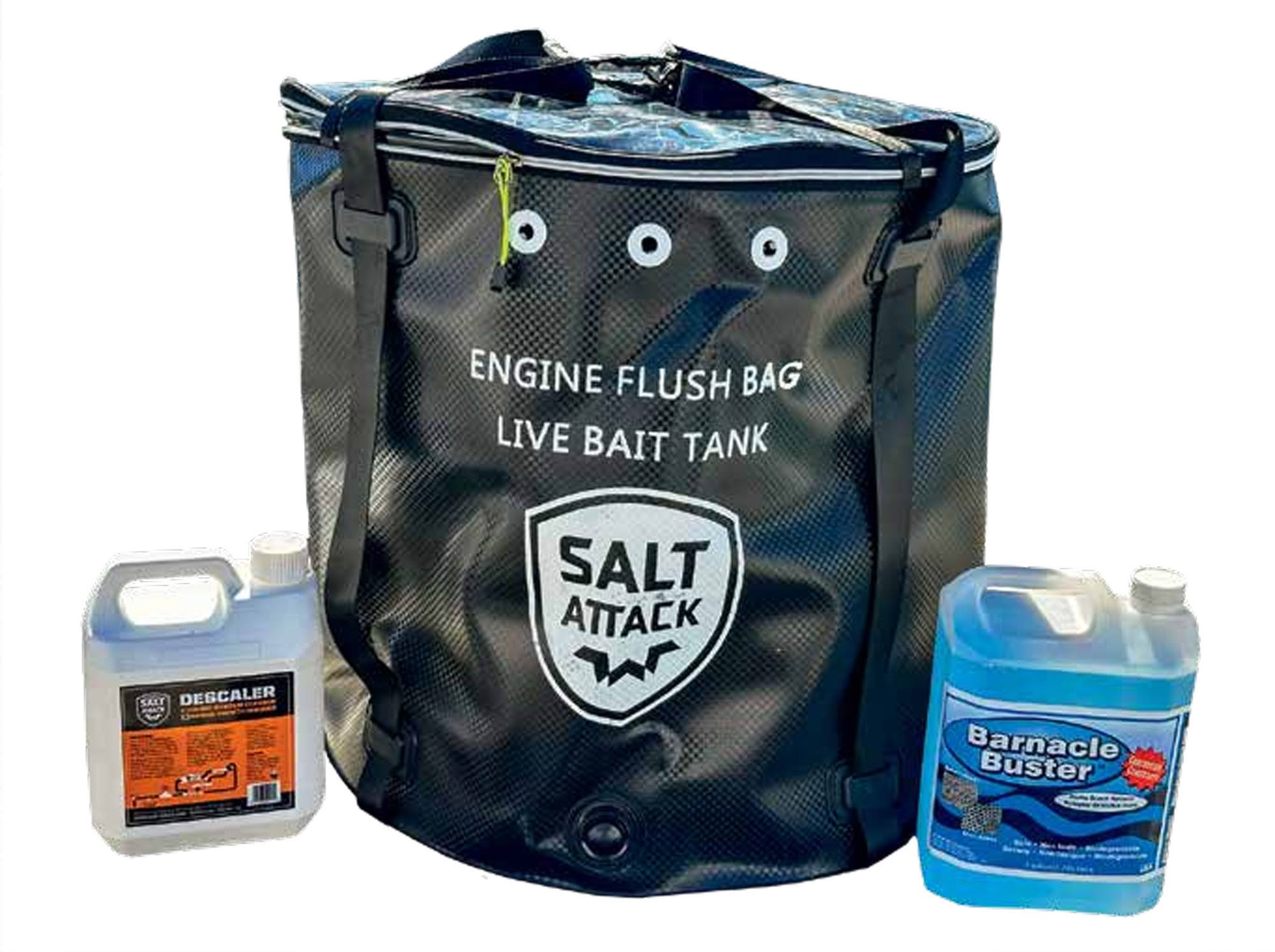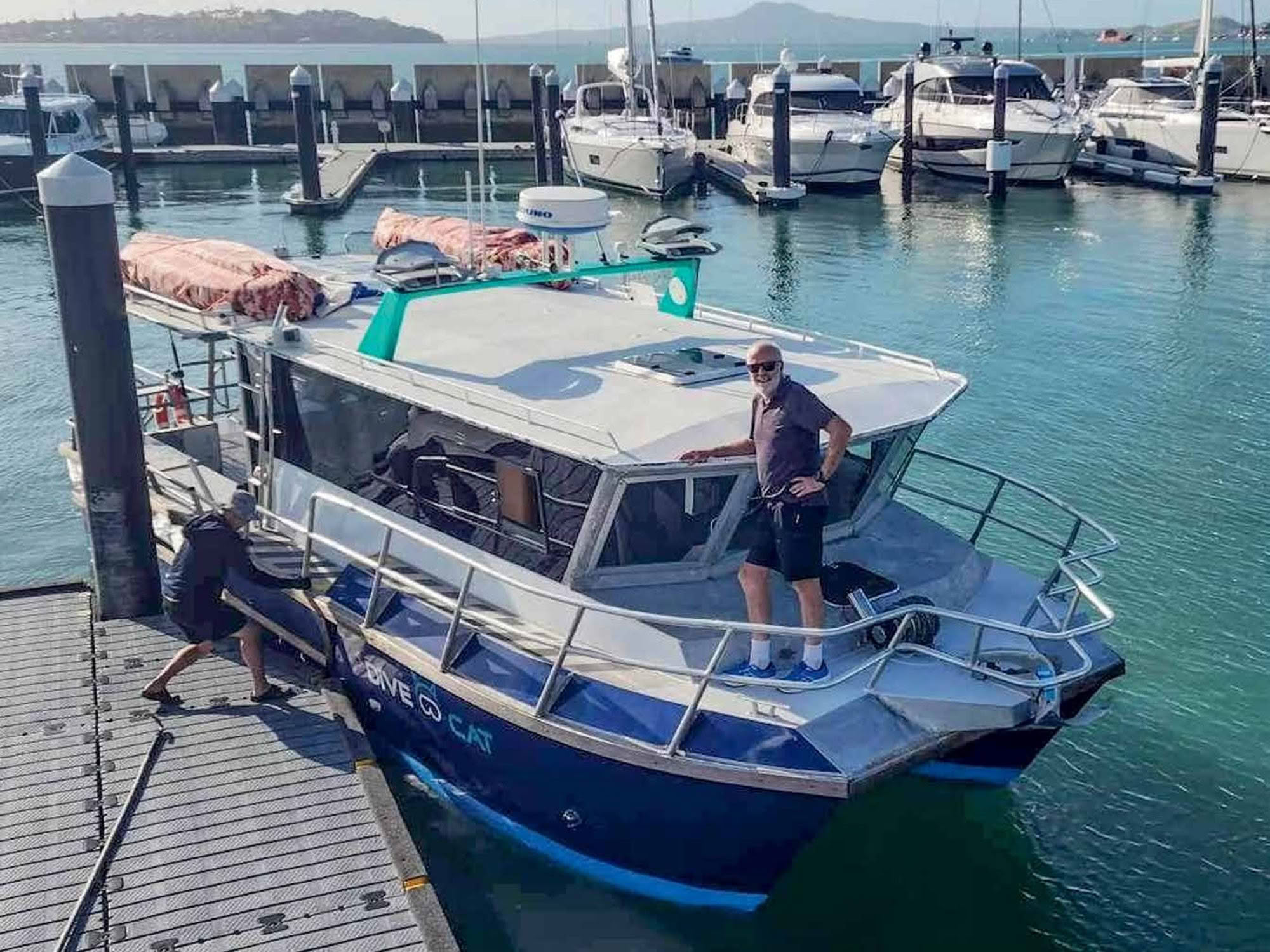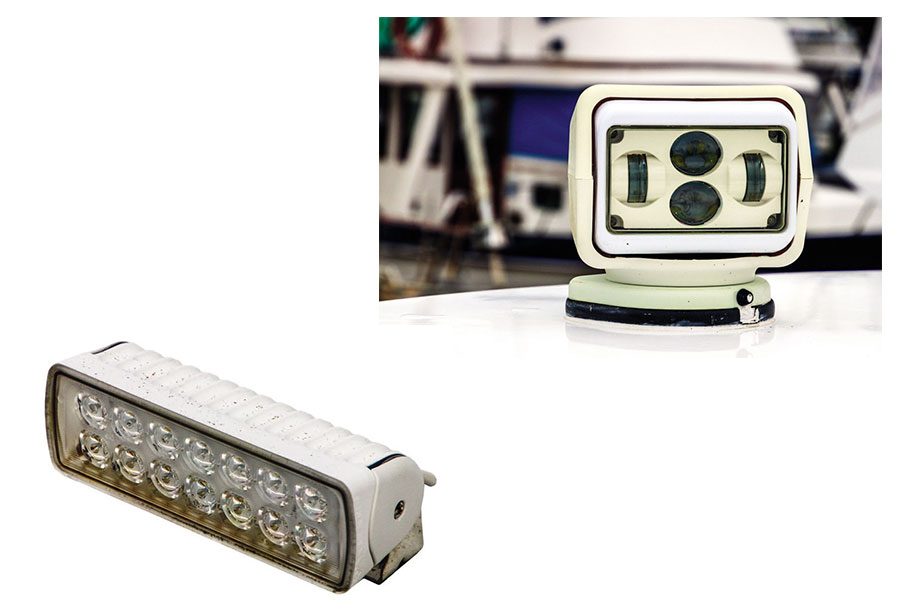

With the shorter winter days rapidly approaching, boaties are more likely to spend at least some of their trip in the dark. Getting in and out of marinas/anchorages is fraught at the best of times, let alone when you can’t see hazards or channel markers. Use a spotlight.
It’s illegal to have very bright, front-facing white lights on your boat while underway if these prevent another boat from seeing your coloured navigation lights. Running at speed with ‘headlights’ isn’t allowed.
But a bright spotlight may be used when coming into a berth or anchorage. Because the hazard is not always in front of you, having a controllable light that can be pointed anywhere it is an advantage. So, if you want to retrofit one, what’s currently available in New Zealand?.
Bottom of the pile, in both cost and complexity, is a powerful waterproof torch. Although these don’t compare with specialist spotlights, they’re cheap, readily available and spare batteries can be kept on hand. The popular Eveready Dolphin model can be sourced from any hardware store or supermarket, and its 200-lumen output is good in an emergency.
A far better option, though, is a handheld rechargeable spotlight. Most marine chandlers have a variety of options, ranging from 12V plug-in models through to battery-powered standalone models. Both halogen bulb and LED models are available, with the halogens being generally cheaper but also consuming more power.
My favourite is the 45-watt rechargeable LED spotlight model available from Jaycar Electronics, which is IP67 waterproof and also floats. It can be recharged through a 12V socket, and the manufacturers claim an astonishing 4,500 lumens of light.
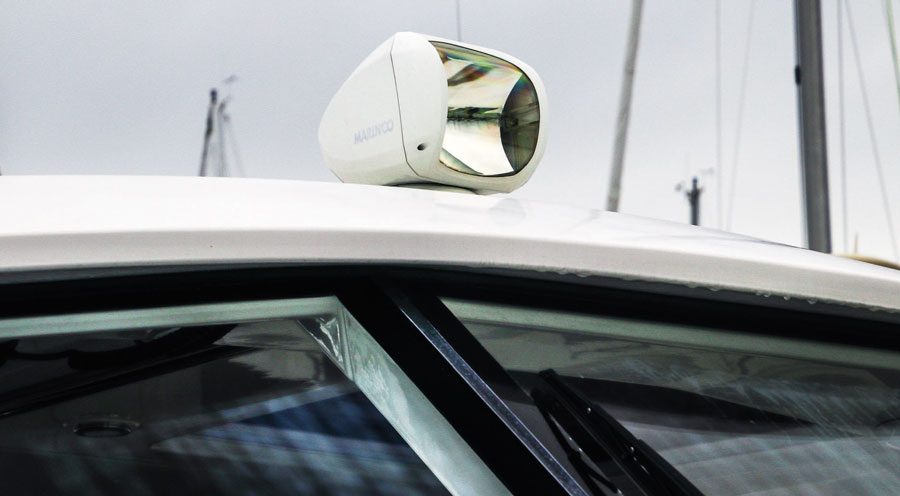
A wrist strap helps prevent it from being dropped overboard and included in the package is a clip-in bracket to allow it to be used hands-free. The manufacturers claim a run time of more than 75 minutes on a full charge, which should be enough to get you home safely.
The issue with a handheld solution, though, is that you need one hand to hold and direct the light. This can be a problem for a solo boatie trying to steer at the same time. Also, you really do NOT want to be directing a spotlight through a glass window. Trust me on this – these units should only be turned on outside the confines of the cabin – inside, you will at the very least temporarily blind yourself!
This could be an issue if it is raining and you don’t want to open the window or hatch, but of course those are precisely the conditions when visibility is limited and you’re most likely to be needing a spotlight.
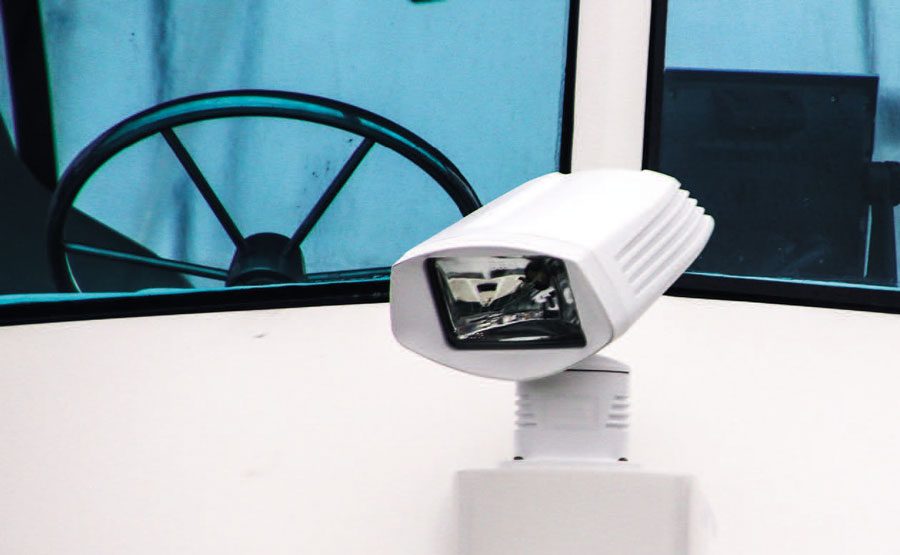
MOUNTED MODELS
A better solution is an externally-mounted spotlight. The fixed-mount versions will cost about the same as a good handheld and need to be permanently mounted on a cabin roof or deck. Before you commit to a location, however, be aware of reflections off shiny surfaces like a bow rail, which can render the spotlight useless due to the glare.
Ensure the intended mounting point is either low and below, or forward of any stainless surfaces. A roof mount is a better solution (since this complies with maritime regulations) but ensure you place it far enough back from the edge of the roof (to cast a shadow over the bow railing and prevent that reflected glare).
When choosing a fixed-mount option, you can opt for either a narrow-beam ‘spotlight’ (it will project the light further but narrowly), or a wide-beam ‘floodlight’ which will light up a wide expanse. Both have their advantages – the floodlight is ideal for finding a mooring in a crowded marina with multiple hazards. On the other hand, a spotlight may be better for trying to navigate landmarks, such as when going through a channel at night.
Another variation on the fixed light theme is the lightbar, which can mix both types of LEDs into a long strip of intense illumination. Hella Marine has a range of lightbars, with its Sea Hawk 470 units providing options of either spot, flood or mixed LEDs producing up to 2,700 lumens per bar. And if that’s not bright enough, the bars can be stacked together for even more power.
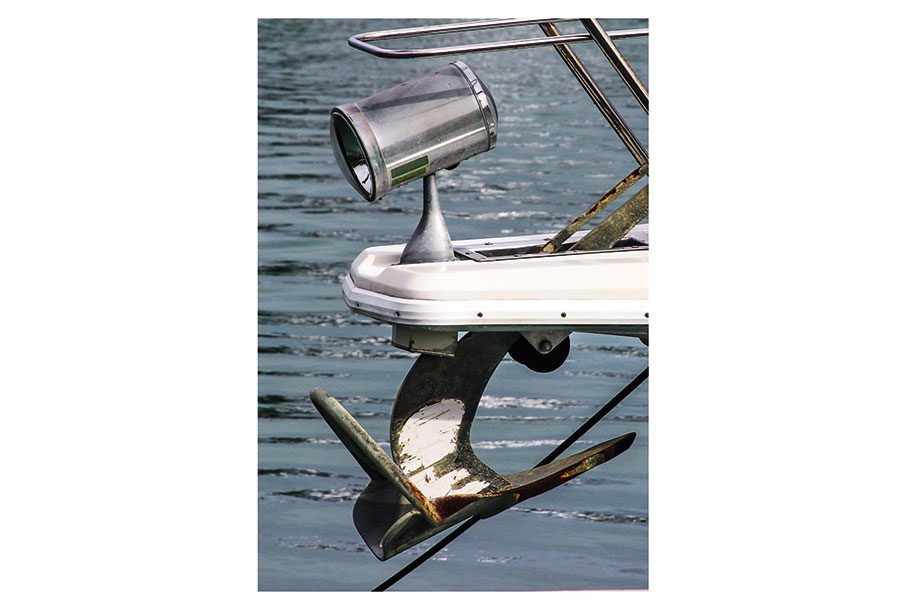
At the top of the range are the permanently-mounted but remotely controlled searchlight-style lights. Most of these can both swivel from side-to-side and tilt up and down. Most modern options come with a wireless remote control unit, although wired helm controls are also available.
With the wireless option the light unit itself only needs a single cable running to it from a suitable power source, and the wireless remote means it can be operated from anywhere on board. Additional remotes can also be purchased, so a twin-helm boat can keep a unit on hand at each station.
These controllable lights may represent a considerable step up in price from the handheld and fixed units, and again both LED and halogen-bulb units are available. The halogen units, such as the $599 model from Marinco, generally have a brighter and narrower beam of light, more akin to a spotlight. The manufacturers claim a 300m beam range for this unit, and of course it is fully water-resistant to IP56 standard.
The nature of LED technology means these units usually illuminate a wider area. The MaXtek remote control LED spotlight from Absolute Marine, for example, has a beam projection range of about 75m but produces a much wider pool of light. The total light output from this unit is 1,600 lumens and it is IP67 waterproof rated.

One benefit of the mounted units is that most have an SOS button, where the light will flash the international distress signal (SOS in Morse Code) continuously if you are in trouble. Another useful feature when searching for something is the auto-sweep mode, where the searchlight will sweep automatically from left to right and back again without needing anyone to operate the remote. Again, useful if you are coming into an unfamiliar area and looking for any hazards.
And if this still isn’t enough for you, Hella Marine also has its Power Beam LED floodlights, which come in both close-range and long-range versions. These produce an insane 7,800 lumens, while consuming just 85 watts of power. To put this in perspective, the landing lights on a 747 airliner outputs around 8,000 lumens!
Just a reminder, though, that it is your responsibility to make sure your boat complies with the maritime rules regarding navigation lights. If your forward-facing white lights are bright enough to prevent someone seeing your red and green navigation lights, they should not be used where there are other boats moving about.
In general, any forward-facing white lights should be located at the masthead, or as high as possible on your boat, while the coloured sidelights are mounted lower down.
Stay safe out there!


